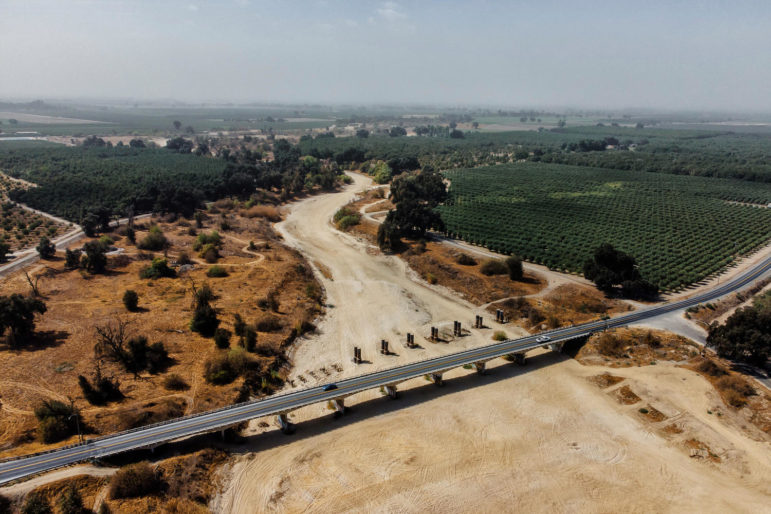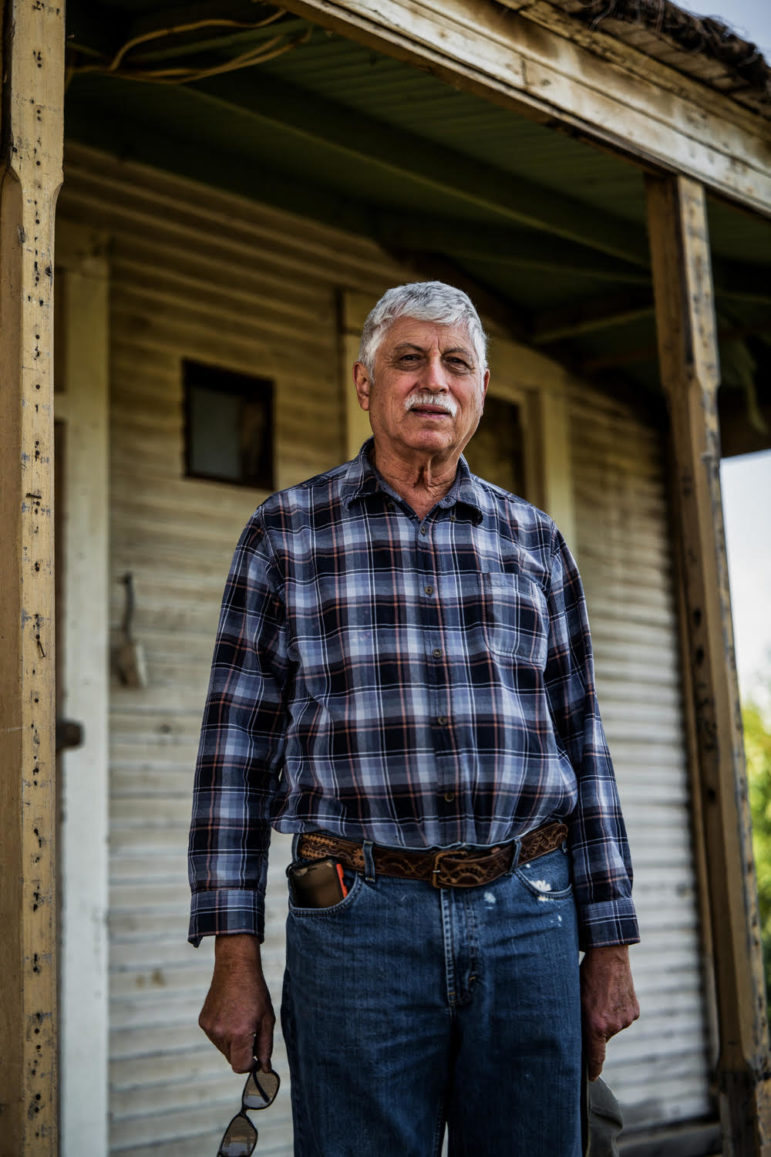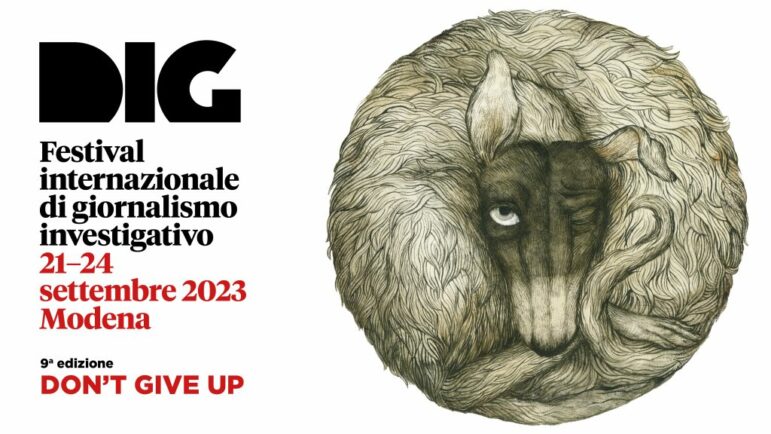

As a result of the 2021 drought, there is very little water in the Kings River in California’s San Joaquin Valley. The water that is available is used on crops.
9 Tips for Investigative Journalists to Improve Their Writing
Read this article in

How to tell a complex story: A searing drought has left little water in the Kings River in California’s fertile San Joaquin Valley. The water that is available is used on crops. Image: Ryan Christopher Jones / CCIJ.io
Yaffa Fredrick, editorial director for the Center for Collaborative Investigative Journalism (CCIJ), says one of the best tips she received as a cub reporter was to just get her words down onto the paper. Only she wasn’t told so tactfully.
“I had a senior editor many years ago who noticed that I tended to self-edit so much that it would delay me from starting to write, and he used to yell: ‘Throw up on paper, Fredrick!’” she recalled.
Writing those opening paragraphs can be a particular problem with long-running investigative projects, says Fredrick, who was part of the Panama Papers team that won a Pulitzer Prize in 2017. Putting pen to paper, or fingers to keyboards, she says, is often “the hardest part of a reporting process.”
But while there is always going to be more reporting you could do, investigative journalists, like other reporters, do need to publish eventually and will always have a deadline. So in the CCIJ webinar From Notebook to Story: Planning and Implementing Your Writing Approach, Fredrick joined Lois Henry, CEO and editor of SJV Water, an online publication that covers water in the San Joaquin Valley of California, to explain their reporting and writing process. The two journalists covered how they work together as editor and reporter, and offered tips for those suffering from dreaded writer’s block. Here are nine tips from their presentation:
1. Respect That Journalists Have Different Styles of Reporting and Collaborating
Fredrick and Henry worked together on two stories as part of the Institute for Nonprofit News’ Tapped Out project to investigate water and injustice in the American West. One story investigated a town sinking as a result of subsidence, the other, Where is the Water Going?, explored big corporate interests and how the battle over water scarcity has impacted livelihoods in drought-hit California.
The pair recognized there are different types of reporters: some are more structured and deliberate, others more intuitive and creative. But both can be effective, they agreed.
“Yaffa and I have very different approaches,” said Henry, who was the chief reporter on the project, while Fredrick was her principal editor. “She is more organized, methodical. I’m more seat of my pants. I do have my own kind of madness method — the swirls of my brain run in a different way — but they do turn into an investigation… Whatever your approach it’s going to be fine. You don’t have to fold yourself into some unnatural template.”
Henry starts every investigation with an elaborate to-do list: what documents she needs, what sources, if she has their phone numbers, what websites she should look at, a consideration of the visual element. Then she starts working down through her list.
“Especially for a large investigative story I ask every person I interview: Am I on the right track? Are there other sources that you can point me to? And add that to the list. As I go, I fold things into the list that are going to be really helpful: a fact, a quote, a phrase, a document, and I document the date and time of every person I call, especially potentially hostile witnesses.”
2. Nail Down Your Elevator Pitch
Once you feel like you have enough material to start writing, Fredrick recommends crafting an “elevator pitch,” a short summary of what it is you’ve found, and how you’re going to tell it.
“What is the story about?” Fredrick emphasizes. “If you can’t define it in two to four sentences, there are some questions you can ask yourself: What’s allowing [a particular problem] to perpetuate? Is it political or corporate greed? Is it legislative? Environmental? Who and how are the key people in the story involved?”
“If you have answered those questions, you should be able to come up with your elevator pitch — which will become your nutgraf,” she said, referring to the summary paragraph that sets up a story, telegraphing to the reader what’s to come. “Once you have your elevator pitch and you have your reporting, you need to sit down and start drafting,” she said.
3. Just Get Cracking
From endless additional reporting to procrastination, journalists are masters of leaving their writing to the last possible minute. But that, said Fredrick, is not the best tactic.
“The longer you delay writing the harder it is to begin,” she said. “Generally speaking, in our industry, you are on deadline… As daunting as it seems, whether it’s the outline or the actual story, it’s a muscle and it has to be exercised. There has to be an expectation that the first draft is going to be a deeply imperfect rap, and that’s totally fine.”
As an editor, too, she is “much happier if I get a piece from a writer that’s half-baked than I don’t get a piece from a writer on deadline at all.”
4. Use Voices from the Field to Tell Your Story
“Going out into the field to interview people — I can’t emphasize how beneficial this is,” said Henry, who met some of the California farmers who would become her central protagonists by chance while out on the road. “We met these people as we were interviewing.”
Once you’re back from the field, though, be sure to remember to make those personal encounters matter. “We pivoted from the massive amount of data to look at farmers, to finding out who was being hurt,” said Henry. “We included all of these voices actually fairly high up in our story,” added Fredrick, “because we were trying to draw the reader in and make the case: these are people you should care about, these are people for who this is their lifeblood, and it’s been taken away from them.”
5. Focus on the People

David Avila, 75, a farmer, at a home that has been in his family for more than 100 years. The Avila family is originally from the Azores in Portugal, and they have been farming in the Central Valley for generations. Image: Ryan Christopher Jones / CCIJ.io
One of the easiest ways to get your readers hooked is to give them people to care about early in the story, Fredrick explained. “I call these people our compelling characters. Why should we care about two titans fighting over water? Well it’s because of the farmers who have been there with their families for generations and suddenly they’re struggling to survive and maybe they’re out of jobs and there’s no clear path to what they would do next. The key is to spell out who is being hurt upfront. And be clear on the scope.”
She also suggested investigative reporters could do a better job taking the reader with them. “The other thing I would say – especially in investigative reporting – often you’ve reported extensively from one place and very likely, your reader will never have seen or been to that place,” she said. “What did it look like, smell like? What are the key details you can spell out how it felt to be in that place? Really bring the place to life for your reader. You can make people care by giving them someone or someplace to care about.”
6. Keep It Simple with Clear Language
Henry laughed recounting how many drafts her story went through from concept to publication. But she also advised reporters to develop their own writing style, and to stick with it.
“I have a really very plain style of writing, but I had just read this fabulous book …[by] a very lyrical writer,” she noted. “I was trying to make it like him, how he would do it. Yaffa wrote back: ‘I have no idea what you are talking about. Please don’t make me read this again.’” That draft got thrown out.
Generally, they both advise cutting jargon and technical terms unless they are really needed. Also, to get a second opinion on your story.
“When you are very close to a story you may not be able to see the holes, the confusing phrase, the section that requires additional clarification,” said Fredrick. “So having a friend, family member, a professional editor look at how your story is manifesting is really helpful.”
7. Fill in the Holes — Until You Can’t Any Longer
For the water investigation, Henry spent a long time “following the trail,” identifying who was moving water out of town, and how it was being allowed to take place. But she hit a roadblock when she asked to see the water sales records. Ultimately, their story pointed out that the big landowners who were pumping water from the region were within their legal rights, drawing the reporters instead to question a system that leaves small farmers on the brink of financial ruin.
“We spent a lot of time trying to fill that hole,” she said. “It’s one of those things: in the back and forth in the editing, and trying to plug the holes, sometimes you have to step back and say: the hole is the story… the lack of accountability is really what’s going on.”
8. Work Collaboratively with Your Editors
The water investigation – which resulted in one story published in partnership with The New York Times, and a second piece published by CCIJ – was a team effort. Alongside Henry and Fredrick, there were also calls and brainstorming among a wider team made up of visual journalists, data editors, and designers.
“We’d talk through where Lois was in the reporting process… documents that she had, documents she did not have, who were the best people she interviewed this week, who were the worst people,” said Fredrick, eventually working up to a draft deadline.
“Writing these stories — these giant investigative stories — you kind of don’t know where to start,” said Henry. “There are so many places where you could begin. The sinking town. That they made the town-people pay for the levee that they had sunk. The farmers going out of business. People are making tons of money… there are so many angles, it was hard to narrow it down.”
“I just think an editor is so important when you’re working on almost any story but especially something that’s investigative, that’s going to be long and complicated, it’s so important to have an editor, a backstop,” Henry said.
9. Keep Asking Questions
Fredrick reminds reporters to never take “the words of anyone you interview as fact, because all these people are speaking from their very subjective experiences. Which doesn’t mean they’re not real experiences, but understanding that there are multiple sides to a story.”
Henry says that “at some point you’ve got to put a period on it. Let people read it and continue reporting and writing.” You might not have answered all the questions, but remember, just because you’re publishing, it does not mean it’s the end.
Editor’s Note: While the text of this story can be republished under GIJN’s Creative Commons license, the California images are all copyright of Ryan Christopher Jones and cannot be reproduced without permission.
Additional Resources
Freelance Investigative Journalism: How to Pitch
Want People to Read Your Investigation? Make Sure You Tell a Good Story
The Rise of Science-Based Investigative Journalism
 Laura Dixon is GIJN’s associate editor and a freelance journalist from the UK. She has reported from Colombia, the US, and Mexico, and her work has been published by The Times, The Washington Post, and The Atlantic. She has received reporting fellowships from the International Women’s Media Foundation and the Pulitzer Center for Crisis Reporting.
Laura Dixon is GIJN’s associate editor and a freelance journalist from the UK. She has reported from Colombia, the US, and Mexico, and her work has been published by The Times, The Washington Post, and The Atlantic. She has received reporting fellowships from the International Women’s Media Foundation and the Pulitzer Center for Crisis Reporting.











